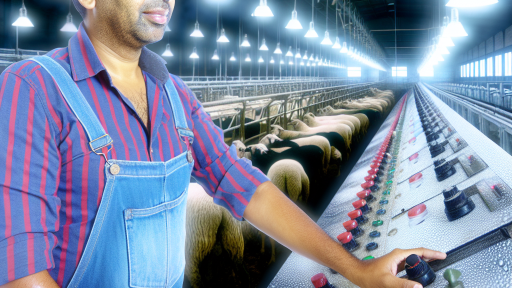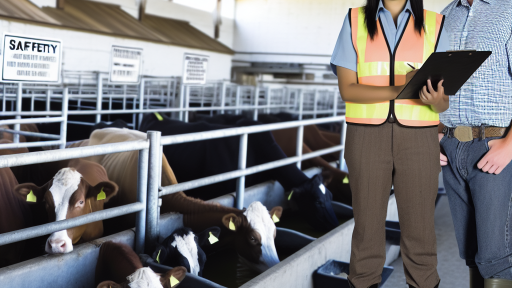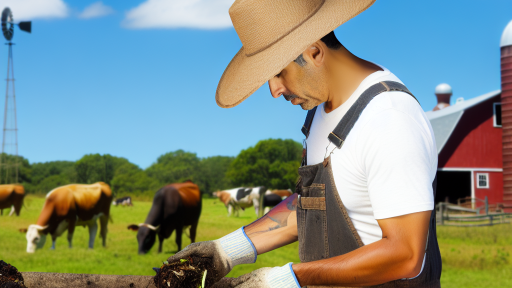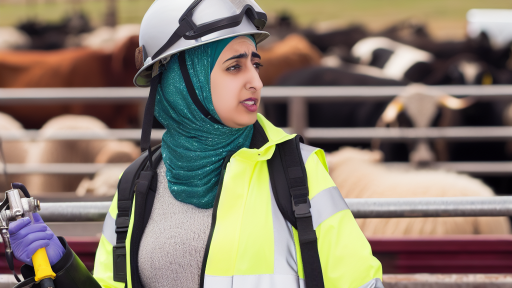Introduction to Cattle Breeding and Its Importance
Cattle breeding plays a significant role in agriculture.
It contributes to food production and economic stability.
By selecting appropriate traits, farmers can enhance herd quality.
Moreover, better cattle can lead to increased productivity.
The Role of Genetics in Cattle Breeding
Genetics underpins the principles of effective cattle breeding.
Each animal inherits traits from its parents.
Understanding genetic markers helps identify desirable traits.
This knowledge allows for the careful selection of breeding pairs.
Improving Livestock Quality
Selecting the right traits improves overall herd health.
Farmers prioritize traits that enhance growth rates.
Additionally, reproductive efficiency is essential for success.
Strong animals produce more milk and meat, supporting sustainability.
Economic Benefits of Strategic Breeding
Strategically breeding cattle can boost profitability.
Higher quality animals yield better market prices.
This investment can significantly benefit farming operations.
Transform Your Agribusiness
Unlock your farm's potential with expert advice tailored to your needs. Get actionable steps that drive real results.
Get StartedUltimately, it enhances the competitiveness of local agriculture.
The Environmental Impact of Cattle Breeding
Effective breeding practices also consider environmental factors.
Traits that promote feed efficiency reduce waste.
Moreover, selecting animals for adaptability helps mitigate climate impact.
Ultimately, this approach supports sustainable livestock farming.
Factors Influencing Trait Selection in Cattle
Understanding Genetic Traits
Genetic traits play a crucial role in cattle breeding selections.
The traits passed down can significantly impact herd performance.
Selection pressure on desirable traits enhances livestock quality.
For instance, traits like growth rate and reproductive efficiency are vital.
Environmental Adaptability
Cattle must adapt to their environment to thrive.
Factors such as climate and pasture quality influence trait selection.
Breeders must consider local conditions when selecting breeds.
Cattle that adapt well typically show better health and productivity.
Market Demand and Economic Factors
Market demand shapes the traits breeders prioritize.
Producers focus on traits that enhance marketability.
For example, meat quality and yield are often prioritized.
In contrast, dairy producers may emphasize milk production traits.
Disease Resistance
Disease resistance is increasingly crucial in cattle breeding.
Breeders select for traits that help withstand prevalent diseases.
This selection improves herd health and reduces veterinary costs.
For example, some breeders focus on immunocompetence traits.
Behavioral Traits
Animal behavior influences management practices and herd dynamics.
Calm and docile cattle are generally easier to manage.
Breeding for favorable behavioral traits can enhance herd safety.
Showcase Your Farming Business
Publish your professional farming services profile on our blog for a one-time fee of $200 and reach a dedicated audience of farmers and agribusiness owners.
Publish Your ProfileFurthermore, behavioral traits also affect animal welfare.
Longevity and Reproductive Performance
Longevity is a significant trait in cattle breeding decisions.
Cows that have longer productive lives yield more offspring.
Selection for reproductive performance ensures herd sustainability.
This approach enhances overall profitability over time.
Utilizing Technology in Trait Selection
Advancements in genetics allow for precise trait selection.
DNA tests provide insights into potential genetic improvements.
Technology helps breeders make informed decisions about lineage.
This results in more efficient and productive breeding programs.
Key Productive Traits
Growth Rate
Growth rate is essential for cattle breeding success.
Higher growth rates lead to better meat yields.
Producers should focus on animals that gain weight rapidly.
A faster growth rate reduces overall feed costs.
Consequently, this trait contributes to greater profitability.
Monitoring growth patterns can help in making informed decisions.
Feed Efficiency
Feed efficiency plays a critical role in cattle production.
Efficient feed converters minimize the cost of raising cattle.
Producers should select breeds known for high feed efficiency.
This trait ensures optimum weight gain per feed unit consumed.
Improved feed efficiency leads to a better return on investment.
To assess this, breeders can analyze historical performance data.
Additional Considerations
In addition to growth rate and feed efficiency, consider frame size.
A larger frame can indicate potential for greater meat production.
Furthermore, health traits should not be overlooked.
Healthy cattle show better overall performance in production.
Lastly, temperament can also affect both handling and performance.
Breeders should assess temperament during selection processes.
Delve into the Subject: Enhancing Goat Milk Production Naturally
Reproductive Traits: Fertility and Calving Ease
Importance of Fertility
Fertility is a crucial trait in cattle breeding.
Higher fertility rates lead to more calves per cow each year.
Increased profitability often results from improved fertility.
Cows that exhibit strong fertility tend to have shorter calving intervals.
Moreover, they contribute to a healthier herd overall.
Factors Affecting Fertility
- Age of the cow
- Nutrition and body condition
- Genetic factors
- Environmental conditions
Age significantly impacts reproductive performance.
Young cows may experience challenges achieving pregnancy.
In addition, proper nutrition is vital for maintaining a healthy reproductive system.
Evaluating Calving Ease
Calving ease is another essential trait in cattle breeding.
Cows that calve easily reduce the need for assistance during delivery.
This trait decreases stress for both the cow and the calf.
Furthermore, calving ease can reduce veterinary costs and labor requirements.
Showcase Your Farming Business
Publish your professional farming services profile on our blog for a one-time fee of $200 and reach a dedicated audience of farmers and agribusiness owners.
Publish Your ProfileFactors Influencing Calving Ease
- Size of the calf
- Breed characteristics
- Cow pelvic size
Larger calves may complicate the delivery process.
Additionally, certain breeds are known for better calving ease.
Cow pelvic size plays a significant role in this aspect.
Assessing and Selecting Traits
Selecting for fertility and calving ease should be a priority.
Utilizing performance records will aid in this selection process.
Consulting with breeding specialists can provide valuable insights.
Ultimately, these efforts lead to a more productive herd.
Find Out More: Preventing Common Goat Diseases Naturally
Health and Resilience Traits
Disease Resistance
Disease resistance is crucial in cattle breeding.
Cattle that possess strong immune systems suffer less from illness.
Additionally, selecting for disease resistance reduces veterinary costs.
Producers can focus on cattle that thrive in various environments.
Moreover, these cattle generally have longer lifespans.
Breeds like Angus and Hereford show promising disease resistance traits.
Thus, incorporating these breeds into breeding programs is beneficial.
Longevity
Longevity is another vital trait in cattle breeding.
Cattle that live longer contribute more to the herd’s productivity.
This trait minimizes the frequent replacement of breeding stock.
It also enhances overall herd genetics over time.
To improve longevity, select animals known for their robust health.
Furthermore, successful breeding relies on maintaining good genetics.
Monitoring reproductive performance can serve as an indicator of longevity.
Uncover the Details: Nutritional Needs of Various Exotic Livestock
Structural Traits: Conformation and Soundness
Importance of Conformation
Conformation refers to the physical structure of cattle.
It impacts the overall productivity and performance of livestock.
Good conformation enhances breeding potential.
Moreover, it contributes to the longevity of the animals.
An ideal conformation promotes efficiency in feed conversion.
Key Aspects of Soundness
Soundness relates to the health and functionality of the animal’s structure.
It influences the animal’s ability to move and reproduce effectively.
Additionally, it determines the animal’s overall resilience against injury.
Evaluating Structural Traits
Evaluating structural traits involves careful inspection of the animal.
Breeders should check for proper body alignment and proportion.
Look for straight legs to promote sound movement.
Also, ensure that the feet are well-shaped and correctly positioned.
Criteria for Ideal Conformation
- Well-defined musculature is essential for strength.
- Deep bodies help in maximizing digestive capacity.
- Level top lines indicate good balance and alignment.
Breeding for these traits can significantly enhance herd quality.
Recommended Practices for Breeders
Breeders should maintain clear records of the structural traits of their cattle.
They should consider both individual and genetic backgrounds.
Moreover, regular health checks can prevent issues related to soundness.
Training in conformation evaluation can improve assessment skills.
Showcase Your Farming Business
Publish your professional farming services profile on our blog for a one-time fee of $200 and reach a dedicated audience of farmers and agribusiness owners.
Publish Your ProfileYou Might Also Like: Essential Guide to Sustainable Fish Farming Practices
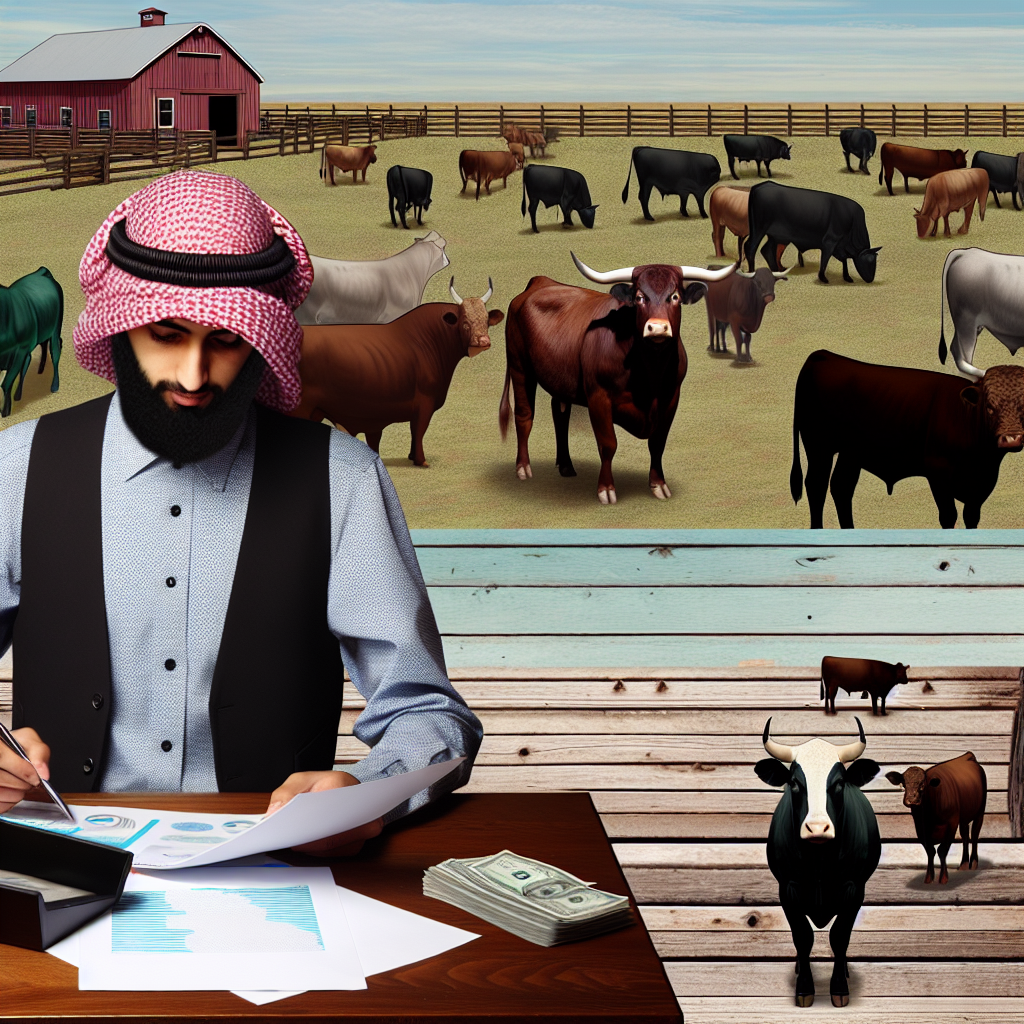
Behavioral Traits: Temperament and Handling
Importance of Temperament
Temperament significantly affects cattle behavior and overall productivity.
Calm animals are easier to manage and handle.
Moreover, they tend to exhibit better health and growth rates.
Stress-free cattle not only perform better but also produce higher quality products.
Assessing Temperament
Producers should assess temperament early in life.
Observation during handling is vital to gauge how cattle respond.
Positive behaviors include calmness, curiosity, and sociability.
Negative behaviors may manifest as aggression, fear, and panic.
Handling Practices
Effective handling practices minimize stress and enhance safety.
Low-stress techniques promote better animal welfare and farm efficiency.
Utilizing quiet voices and gentle movements can make a difference.
Additionally, proper facility design contributes to easier handling.
Selecting for Temperament Traits
Breeders can select for temperament traits genetically.
Choosing bull and heifer lines with gentle dispositions is crucial.
Genetic testing may help identify favorable traits early.
Ultimately, a focus on temperament leads to a more manageable herd.
Genetic Considerations
Hybrid Vigor
Hybrid vigor is an essential trait in cattle breeding.
It results from crossbreeding different genetic lines.
As a result, hybrid vigor typically leads to improved performance.
This improvement encompasses growth rates and fertility.
Moreover, hybrid animals often show greater adaptability.
This adaptability can be particularly beneficial in challenging environments.
Genetic Diversity
Genetic diversity plays a crucial role in cattle health.
It can help prevent long-term repercussions from inbreeding.
Higher genetic variability enhances disease resistance in herds.
This resistance contributes to overall livestock robustness.
Additionally, genetic diversity supports trait selection.
For example, it enables breeders to select for productivity.
Incorporating Hybrid Vigor and Genetic Diversity
To achieve optimal results, breeders should strategically select cattle.
They must consider both hybrid vigor and genetic diversity.
Using a calculated approach will maximize herd performance.
Therefore, hybrid breeding programs can be effective tools.
Furthermore, maintaining diverse gene pools enhances breeding objectives.
These traits fundamentally impact breeding success.
Balancing Traits for Optimal Breeding Outcomes
Importance of Trait Selection
Choosing the right traits is crucial for successful cattle breeding.
Desired traits significantly influence herd performance and productivity.
Additionally, careful selection can improve overall herd genetics over time.
Key Traits to Consider
First, focus on reproductive efficiency for sustainable breeding results.
High fertility rates contribute to maintaining herd numbers.
Showcase Your Farming Business
Publish your professional farming services profile on our blog for a one-time fee of $200 and reach a dedicated audience of farmers and agribusiness owners.
Publish Your ProfileFurthermore, longevity is essential as it affects lifetime productivity.
Next, evaluate growth rates for market competitiveness.
Cattle that gain weight efficiently offer better profitability.
Moreover, understanding feed conversion can lead to cost savings.
Physical Characteristics
Assess body structure and conformation for health benefits.
Strong, healthy animals are more resistant to diseases.
In addition, good conformation improves performance during production.
Coat color and texture may also play roles in breed selection.
These traits can affect heat tolerance and survival in various climates.
Behavior and Temperament
Temperament is another important trait in cattle breeding.
Calm, docile animals are easier to handle and manage.
This leads to reduced stress for both the animals and handlers.
Genetic Considerations
Genetic diversity should be a priority when selecting breeding stock.
This approach ensures the reduction of hereditary diseases.
Additionally, it supports the overall health of the herd.
Economic Factors
Market demands and economic factors must guide trait selection.
Evaluate which traits will provide the best return on investment.
Incorporating market trends can enhance breeding strategies.
Utilizing Technology
Leverage modern technologies for informed trait selection.
Genomic testing offers valuable insights into breeding choices.
This data can optimize selection strategies significantly.
Creating a Balanced Breeding Plan
A balanced approach to trait selection ensures optimal breeding outcomes.
Prioritize both production traits and animal welfare in your goals.
Using a comprehensive breeding plan mitigates potential challenges.
Additional Resources
Understanding EPDs and Genomic Testing in Beef Cattle
Genomic Analysis, Progress and Future Perspectives in Dairy Cattle …

